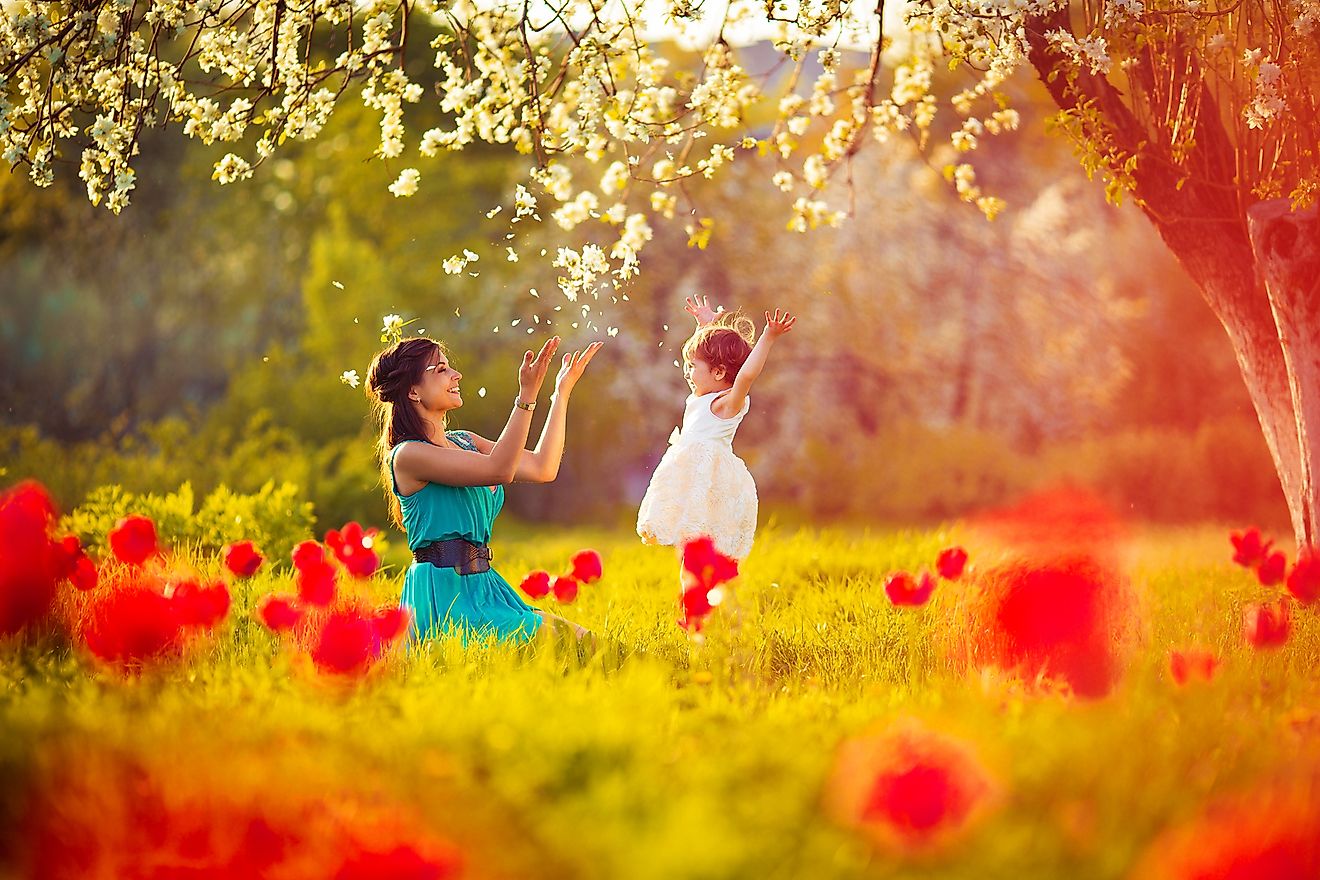When Is The First Day Of Spring?

- The first day of spring, also known as spring equinox or vernal equinox, has traditionally been celebrated either on March 20 or March 21.
- The beginning of spring is not fixed on any calendar but its definition relates to biological indicators.
- Several factors contribute to the change in the first date of spring every year.
Spring is one of the four temperate seasons of the year. It is considered the most beautiful and friendliest season of the four seasons and is usually referred to as a season of rebirth, renewal, rejuvenation, and regrowth. Spring falls between winter and summer. The Southern Hemisphere experiences autumn when it is spring in the Northern Hemisphere and vice versa. During this season, the lengths of day and night are equal, with the length of the day increasing as the night length decreases in the course of the season. Spring adage has it that one can balance an egg on its end on the equinox.
The First Day Of Spring
The first day of spring, also known as spring equinox or vernal equinox, has traditionally been celebrated either on March 20 or March 21. For the last two years (2018 and 2019) the spring equinox fell on March 20. However, in 2020, the vernal equinox will be welcomed on Thursday, March 19 (and March 20 for the next three years). Astronomers now say that spring season starts a day earlier.
The beginning of spring is not fixed on any calendar but its definition relates to biological indicators such as animal activities, the blossoming of flowers, and some special smell from the soil. These indicators may vary from climate to climate and according to specific weather patterns. In the Chinese traditional calendar, the season is defined as the period between Lichun (February 3-5) and Lixia (May 5-7). In Celtic tradition, spring begins in early February and runs through to early May.
Why The First Day Of Spring Keeps Changing?
Several factors contribute to the change in the first date of spring every year. The simplest reason is that the number of days in a year is not even numbered neither are the days in a season. The other reason for the shifting of the dates is that the orientation of the Earth’s elliptical orbit changes, causing the earth’s axis to constantly point a different direction. The positional changes influence the time the earth gets to the 90-degree location in its orbit which marks the beginning of each season.
Another complication revolving around spring equinox is about the length of day and night. While it is widely believed that on the first day of spring, night and day both have 12 hours throughout the world. However, this is not usually the case. Daytime begins the moment any part of the sun becomes visible on the horizon and ends when the sun has fully set. Because of the atmosphere light usually appear or remains above the horizon when the sun has long risen or set.
Vernal Equinox; What It Means?
Vernal means “new” or “fresh” while equinox means “equal night.” Regardless of the weather, vernal equinox marks the start of spring. Since the winter solstice (December), the hours of daylight have been growing each day. However, even after three months, nights still seem to be longer than a day. The vernal equinox marks the beginning of longer days than nights. On this day, the sun crosses over the equator from north to south. The shinning rays on the equator produce the effect of equal day and night.











